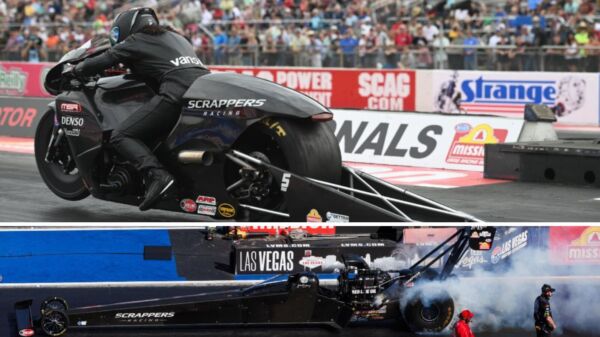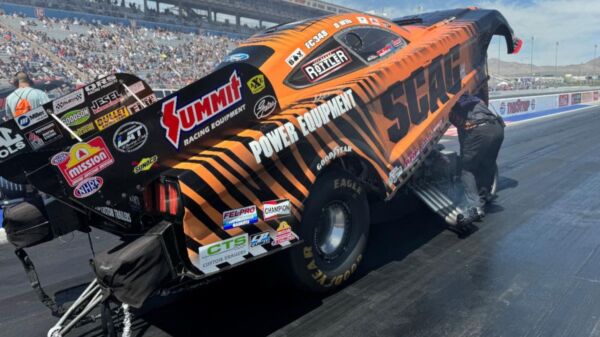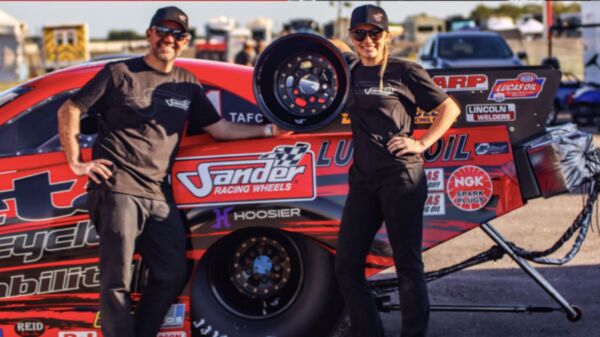In the wake of radial-tire racer Jamie Hancock’s shot-heard-round-the-world 3.599-second blast at the sixth annual running of Tyler Crossnoe’s Holley EFI Outlaw Street Car Reunion at Beech Bend Raceway, promoters, media members, racers and tuners have been vocal in their support and/or disbelief of the potentially historic moment in Kentucky. Despite steadfast belief by Hancock and company, as well as many people associated with what would have been the first-ever sub 3.6-second run for a nitrous oxide-assisted doorslammer, threats of lawsuits, talk of slander and essentially non-stop finger pointing led Crossnoe, the event’s aforementioned owner and promoter, to publicly discredit any and all performances posted during the event.
“I’m going on the record as of right now, as event owner and director, and negating all runs from the 2019 edition of the Outlaw Street Car Reunion,” Crossnoe said. “I know 95% of those runs were legit. But the other 5% will continue to raise question marks and those question marks will continue to kill the reputation of our event.”
While questions surrounding the situation were plentiful and oft-accusatory, Compulink Timing System’s Bob Brockmeyer and Bandimere Speedway’s Executive VP Operations Larry Crispe both confirmed that the decision to throw out the runs was the correct one as the track’s timing system’s guard beam wasn’t active.
For the uninitiated, the NHRA – drag racing’s gold standard as far as sanctions and series are concerned – has instituted the use of the guard beam for nearly 15-years, although the concept and functionality dates back to the late 1960s according to Brockmeyer. Specifically put in use for “hard-leaving, low-slung” doorslammers, the guard beam is 13 3/8ths of an inch down the track from the stage beam. Most commonly the stage beam is broken when the front wheels of a race car roll forward, starting the clock, but if a car were to leave the starting line and, for instance, nearly drag the rocker-panel on the ground and not break the stage beam, it would hit the guard beam and start the timing system. Activating the use of the guard beam is something that is part of setting a specific eliminator up in the timing system computer – similar to setting up whether a class would run off a sportsman or professional tree. The distance from the stage beam is directly correlated to the common front tire size rollout at a specific air pressure with only a 1/4 inch of play.
“Tyler did the right thing,” explained Brockmeyer. “Apparently there was some talk online that it was a wet or lazy photocell or that, not surprisingly, the timing system was to blame. That’s not the case here. Without the guard beam active, which it was not, there’s no way you can count those runs.”
Crossnoe confirmed via text message to DRAG ILLUSTRATED that the guard beams should have been active for his Outlaw Street Car Reunion, but a setting was incorrect.
“They [guard beams] were supposed to be on, but a setting got crossed up,” Crossnoe said. “I’ve talked to Brockmeyer since it happened and he said a similar situation took place this past weekend at the NHRA national event in Houston during a mountain motor Pro Stock run – the guard beams were supposed to be on but weren’t.”
World-renowned track prep and timing system specialist Larry Crispe doubled-down on Brockmeyer’s stance and Crossnoe’s ultimate decision, and also outlined a slew of often-overlooked issues that track operators and promoters must pay attention to when it comes to the accuracy of a timing system and avoiding issues such as this.
“The guard beam absolutely should have been in use,” said Crispe. “It’s a class-specific setting that is something you’re going to want in place for basically any type of fast doorslammer racing. There are more extensive fail safes that we’ve developed, such as a guard wall that is even further down from the guard beam and takes into account front-end overhang, which is something we use at Bandimere Speedway routinely for events like the DRAG ILLUSTRATED World Series of Pro Mod, but generally speaking the guard beam is going to solve most the problems you have with cars dragging the beams.
“It’s a multi-faceted situation, though,” continued Crispe. “There are so many factors that can affect the accuracy of a timing system, and we spend a lot of time working to refine these things and working with track owners and operators to improve their programs. One of the issues that we’ve see as a potential issue – especially with these events that utilize radial-specific prep – is how shiny the surface becomes and the potential of the timing system’s infrared beams being reflected in various angles.”
Brockmeyer likened an infrared beam hitting a shiny surface to the sun hitting a calm lake.
“We’ve seen instances where the beam has been directed around a wheel,” he explained.
Crispe explained that the ideal practice is to only spray traction compound where the cars will be running, and cited the NHRA Safety Safari’s use of cardboard and/or metal panels around the timing system to avoid spraying high-sheen glue in an area that could impact accuracy.
“Those beams are designed to be used above flat-black surfaces, matte black – not reflective,” said Crispe.
The longtime facility manager at Bandimere Speedway also stated that it is routine for national event facilities to perform a “metal tape measurement” of all distances prior to the start of any significant event, which DRAG ILLUSTRATED would argue may need to become a standard procedure at any and all outlaw, small-tire races to avoid potentially troublesome situations regarding timing system accuracy in the future.
This story was originally published on April 16, 2019. 




























